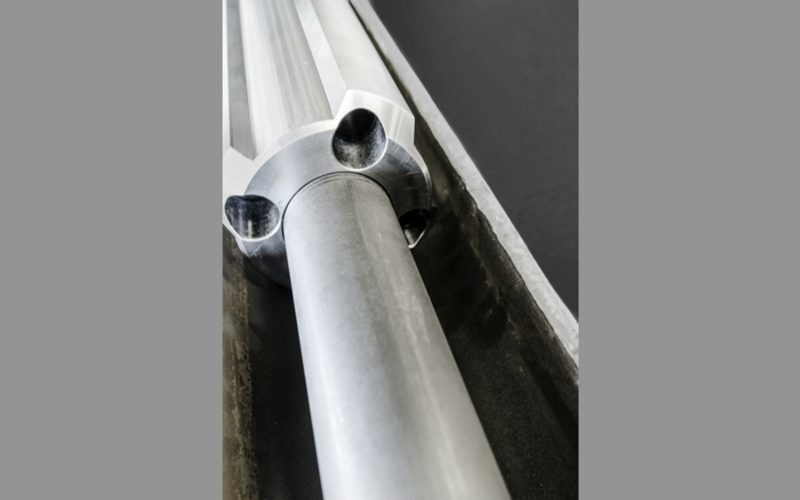The undulating trajectories common to horizontal wells are the source of one of their greatest pain points—gas slugs. When these fast-moving accumulations reach the internals of an artificial lift system, a best case result may be a momentary pause in production. On the other hand, a gas slug could represent the bitter end for a lift system that may have cost an operator a sum in the low six figures.
The problem has been serious enough to drive operators in the Permian Basin to adopt an artificial lift strategy not historically used there. Manufacturers have responded to the challenge by trying to make pumps more slug-tolerant, while others are marketing automatic shutdown systems for asset protection.
HEAL Systems has taken a different tact with a technology that it says removes slugging from the production equation by separating the horizontal from the vertical well sections and regulating the flow between them. The emerging innovation is called a horizontal-enhanced artificial lift (HEAL) system. It has no moving parts, and can be connected to any variant of lift system.
In May, the company gained commercial steam through a joint venture with Schlumberger. Partnering with the service company will give HEAL Systems, formerly known as Production Plus Energy Services, manufacturing support and elevate its visibility in key markets such as the Middle East.
“We’ve recognized that as a small company, scaling up is a challenge,” said Jeff Saponja, the chief executive officer of HEAL Systems, adding that the goal of the joint venture “is to get this technology out there, grow the company faster, and have access to an incredible research capability to develop it to the fullest.”
Production Plus shareholders retain the majority share of the joint venture, allowing it to continue to market HEAL units to other service outfits and pump manufacturers.
Based on its more than 200 installations in the US and Canada, the company is touting data that show its product has extended the run life of pumps in shale wells by months and sometimes years. Highlighted case studies of multiple wells in different formations claim this longevity has generated production improvements of 40–100% above prior baselines.
How To Smooth a Slug
Saponja said the reason shale producers are plagued with constant slug-induced problems is that horizontal wells are incapable of a consistent flow profile. Instead, they behave like geysers. “You will get a bunch of liquids for a little bit, you get a bunch of gas for a bit, you get a bunch of nothing for a bit, and then the whole cycle repeats itself,” he said.
When the cycle eventually results in the formation of a gas slug, there is a real risk of it bringing a pump to a full stop. This issue, called gas-locking, may last for hours and if downhole pump motors are left running, they will burn out and may cause other components to melt.
The HEAL is designed to circumvent these potentials through its three main elements: an intake seal in the lateral section, a sized regulating string that extends several hundred feet up the curve, and a vortex separator that stands upright in the vertical well section. The latter two components take advantage of long-established industry lessons learned in controlling multiphase flow.
The regulating string is partly based on the systems developed in the 1990s by the underbalanced drilling sector for dampening gas influxes incurred while making drillstring connections. The vortex separator takes a page from surface separation technologies which use the same technique to remove liquids from gas.
At the start of the process inside the lateral, the mixed flow of oil, gas, and water enters the intake seal where it is forced to conform to the narrow diameter of the regulating string. Saponja compared the regulator string to a garden hose: “There’s only so much flow that can get through there,” he explained. “It tempers and tames the slug—smoothing it right out.”
The dampened flow then rises up the well’s curve until it passes through the separator which uses channels to create a centrifugal effect to separate the oil and gas. As the free gas exits the separator, slug flow has been eliminated and replaced with a regulated stream. Oil and water are discharged from the separator and into the annulus where they are then pumped up the well under more steady conditions.
Most installations of the technology have been in wells facing lift issues but the company is eager to see its use grow for initial completions. HEAL Systems says that with a slight modification, operators can install the system without a separator unit immediately after hydraulic fracturing. When natural flow ends, the separator is added and connected to a lift system.
And for the first time last year in North Dakota, HEAL Systems used its technology to protect producing wells from frac hits, an interwell communication event that is common to the shale sector.
With the alternative, operators can be spared some of the costly work involved with a strategy known as a full de-completion where lift systems and production tubing are removed prior to an offset hydraulic fracturing operation. The company says its technology eliminates the need to remove tubing and provides wellbore pressure isolation for a cost of USD 12,500 compared with the USD 150,000 cost involved with de-completions.
For Further Reading
SPE 185128 Breaking the 800 Psi ESP PIP Barrier: How A Proven Flow-Conditioning Technology can Dramatically Improve ESP Performance in Horizontal Wells, by D.W. Kimery, Production Plus Energy Services, et al.


